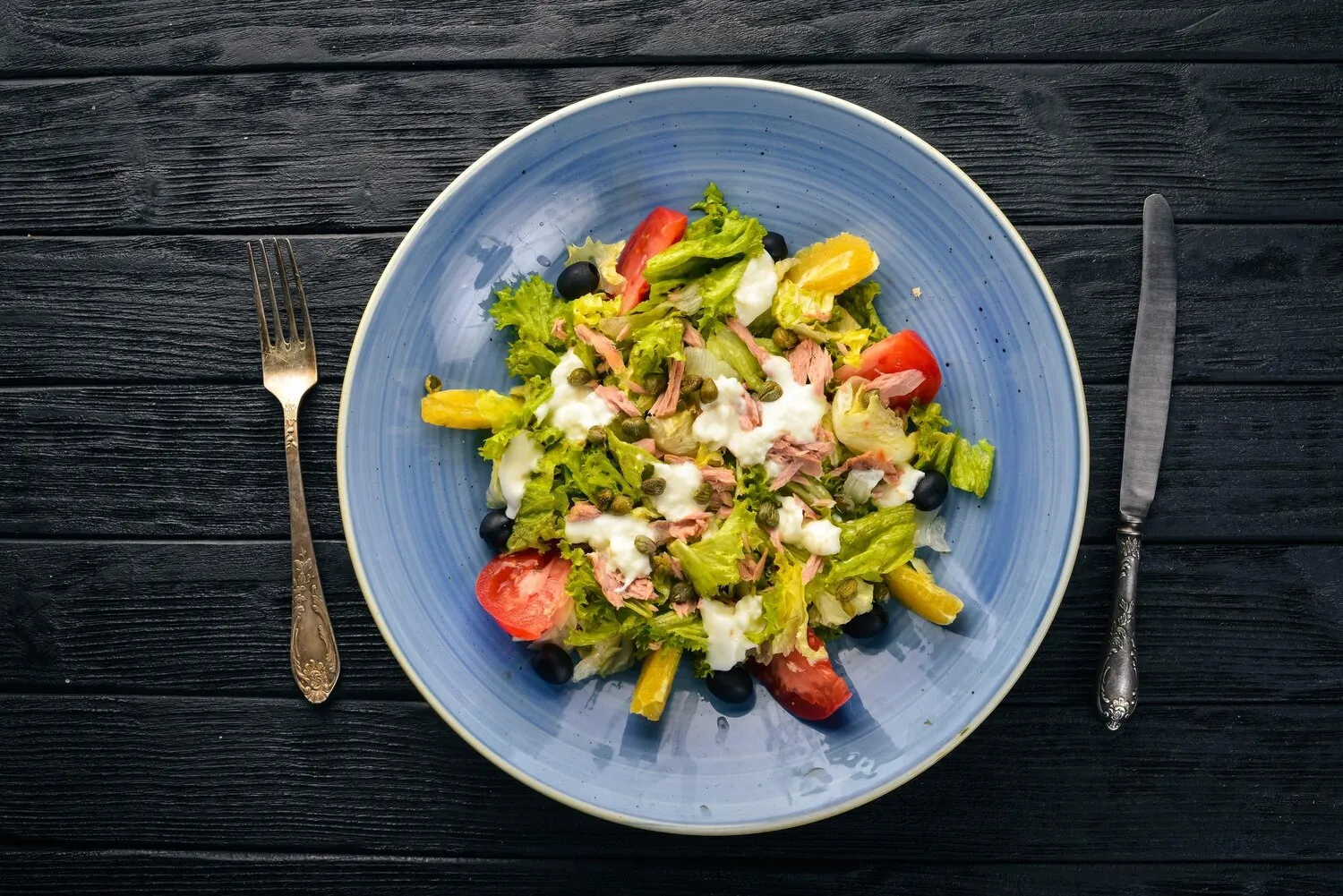
Salad
Fresh salads with various toppings and dressings.
Nutrition Facts
* The % Daily Value (DV) tells you how much a nutrient in a serving of food contributes to a daily diet. 2,000 calories a day is used for general nutrition advice.
Salads have ancient roots, with evidence suggesting their consumption dating back to the Roman Empire and ancient Greece. Early salads were simple mixtures of leafy greens dressed with oil, vinegar, and herbs. Over time, the concept evolved with the introduction of new ingredients from around the world, solidifying the salad's status as a versatile and globally adaptable dish.
Salads are universally recognized as a health-conscious food choice, often associated with fresh, seasonal ingredients and a balanced diet. They play a prominent role in many cultures, reflecting local ingredients and culinary traditions.
Health and Wellness
Salads are widely perceived as healthy meals or side dishes, emphasizing fresh produce and nutritional value. They are often incorporated into weight-loss diets and promoted as a way to increase vegetable consumption.
Regional Variations
Different cultures have developed unique salad styles using local ingredients. Examples include the Greek Salad (Horiatiki) with tomatoes, cucumbers, feta, and olives, the Italian Caprese salad with tomatoes, mozzarella, and basil, and the Niçoise salad from France with tuna, olives, and anchovies.
Social Gatherings
Salads frequently appear at social gatherings, potlucks, and buffets as a versatile and visually appealing dish that caters to diverse tastes and dietary preferences.
The flavors in a salad are highly variable and customizable, ranging from sweet and tangy to savory and spicy, determined by the chosen ingredients and dressings.
A salad's flavor profile is a complex interplay of its components. Fresh, crisp greens provide a base of earthiness and mild bitterness. Vegetables like tomatoes, cucumbers, and bell peppers contribute sweetness and juiciness. Fruits like berries, apples, or citrus introduce sweetness and acidity. Cheeses, nuts, and proteins add savory, salty, and umami notes. The dressing is key, providing a unifying flavor element – vinaigrettes offer tartness, creamy dressings add richness, and herb-infused oils bring aromatic complexity.
Ingredient Quality
Choose fresh, high-quality ingredients that are in season. Organic produce often offers superior flavor and nutritional value. Wash and dry greens thoroughly to prevent soggy salads.
Dressing Application
Dress the salad just before serving to prevent wilting. Toss gently to coat all ingredients evenly. Consider serving the dressing on the side to allow guests to customize their portion.
Layering Flavors and Textures
Create a balanced salad by incorporating a variety of flavors and textures. Combine crunchy elements (nuts, croutons), creamy elements (avocado, cheese), and juicy elements (tomatoes, cucumbers) for a satisfying experience.
Presentation
Arrange the salad ingredients attractively on the plate or in a bowl. Use contrasting colors and textures to create visual appeal. Garnish with fresh herbs or edible flowers for an extra touch.
Explore additional Salad dishes and restaurants
Explore SaladDiscover top dining spots and culinary experiences in Namur.
Explore NamurLearn more about the food culture, restaurant scene, and culinary heritage of Belgium.
Explore Belgium